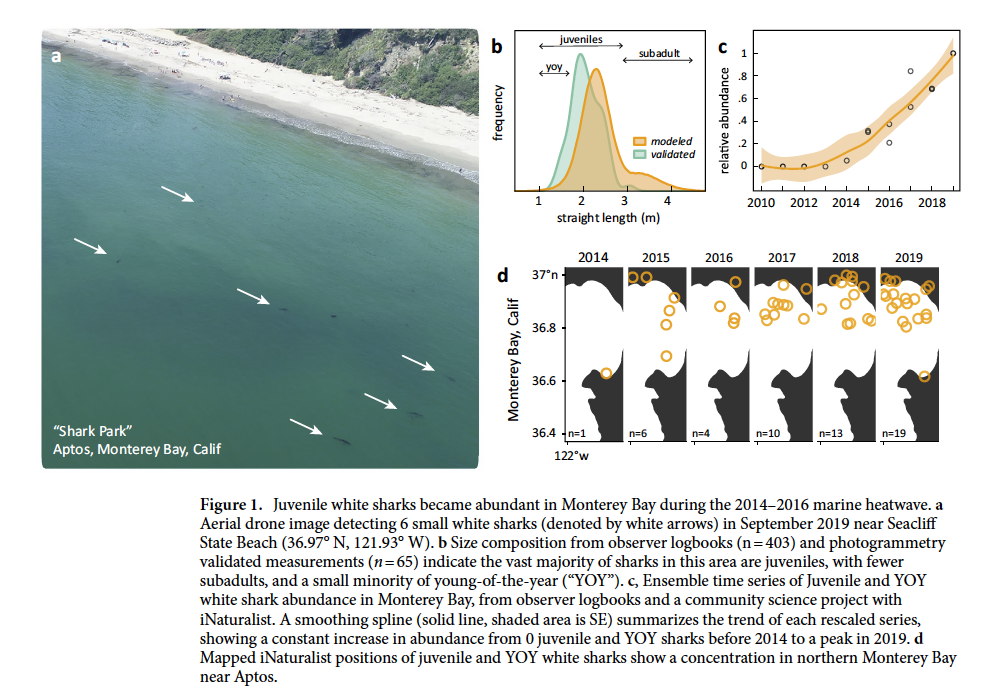In a study published February 9, 2021, scientists at the Monterey Bay Aquarium used community science, recreational fishery records, and photogrammetry to estimate the relative abundance of juvenile white sharks (< 2.5m in length) in Monterey Bay. Since they began tagging these sharks since the year 2000, they used electronic tags to establish shark thermal preferences, and then used mesoscale environmental data to track the latitudinal limits and area of white shark thermal habitat over the last 40 years.
They found these sharks have become increasingly common since the 2014-2016 North Pacific marine heatwave, but weren’t here before. This corresponded with the position of the white shark thermal niche, which prior to 2014, had an average northern limit of 34.4° N. That’s near Point Conception just north of Santa Barbara. Since 2014, that limit averaged 36.3° N near Monterey. Despite this movement north, the total suitable habitat for juvenile white sharks declined over this period.
While reading this, many of you might be thinking about beach safety, both for yourselves and perhaps that of sea otters. In the last decade, bites from white sharks has become a leading source of sea otter mortality in California. The information presented in this study can help to understand and explain this phenomenon.
The study appears here in the journal Scientific Reports, and the PDF is attached. The article was further covered by the Guardian here, and in an MBA web story here.
